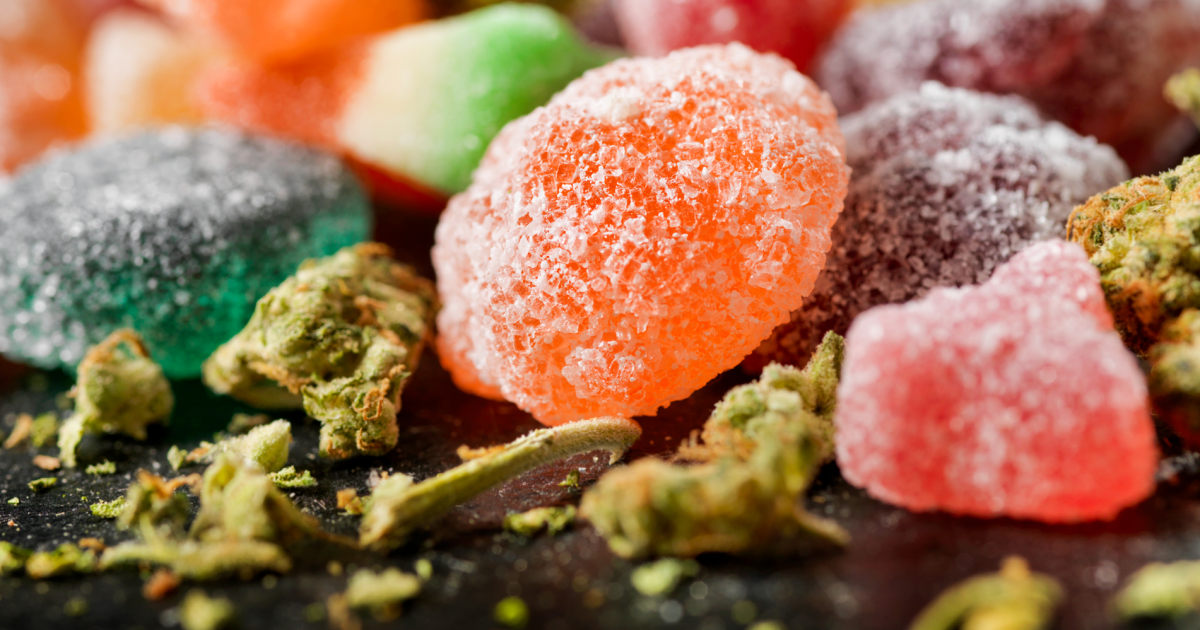
More than 11% of high school seniors report using delta-8 THC — a compound closely related to the psychoactive chemical in marijuana that’s legal in many states thanks to a loophole in the 2018 farm bill — according to a study published Tuesday in the Journal of the American Medical Association.
The study, led by researchers at the Keck School of Medicine at the University of Southern California, is one of the first to offer a nationwide snapshot of teenage use of delta-8, a little-researched cannabis product with psychoactive effects that has grown in popularity in recent years.
The researchers looked at data from the Monitoring the Future survey, a nationwide survey run by the University of Michigan and funded by National Institute on Drug Abuse, which asks adolescents about substance use and attitudes toward drugs. Specifically, the researchers focused on responses from February through June 2023 about delta-8 and marijuana use from nearly 2,000 high school seniors.
Nearly 31% of the high school seniors reported having used marijuana in the past year, and more than 1 in 10 reported having used delta-8 THC.
“We know high school students naturally want to explore and try new ‘exciting’ things, like e-cigarettes, alcohol or marijuana,” said senior study author Adam Leventhal, director of the University of Southern California Institute for Addiction Science. “It’s not surprising that we’re seeing that they’re using delta-8. We just didn’t expect it to be so high.”
Delta-8 tetrahydrocannabinol is only slightly chemically different from delta-9 THC, which is the type of THC that is typically found in marijuana and what people most likely think of as responsible for the drug’s high.
Delta-8 is sometimes referred to as “diet weed” or “weed-lite,” because it’s believed to have weaker psychoactive effects than delta-9. The problem, Leventhal said, is that there isn’t enough research to say that definitively.
“There have been some trends for consumers to say online that the effects might be less robust than marijuana, but I think it’s difficult to put any credence in that at this point,” he said.
Delta-8 THC has garnered attention in recent years thanks to a loophole in the 2018 farm bill, which legalized hemp, defined as a cannabis plant that contains less than 0.3% delta-9 THC. (Hemp and marijuana are both cannabis plants; the difference between the two is how much delta-9 they contain.) The farm bill, however, made no mention of delta-8 — an omission that made it possible for vendors to sell delta-8 as long as it came from hemp plants, not marijuana plants.
“I don’t think anyone thought this was going to happen when the farm bill passed,” said Ziva Cooper, director of the Center for Cannabis and Cannabinoids at UCLA. “The genie is kind of out of the bottle at this point.”
The new study found that delta-8 use by high school seniors was higher in the South and the Midwest and in states where recreational marijuana isn’t legal. Delta-8 was also more likely to be used in states where there are no regulations on its use. It is banned or severely restricted in 24 states and Washington, D.C., according to CBD Oracle, a cannabis consumer research company.
In places without legal marijuana markets, companies may look to market delta-8 products as substitutes, Leventhal said. The same goes for the consumer, he said, who may turn to delta-8 where it’s easier to buy than marijuana.
Still, many questions remain around delta-8 THC and possible effects it may have. Compounding matters is the lack of uniformity of the products on the market: Doses can vary widely in concentration, and there’s no guarantee a product contains what’s actually on the label, experts say.
While research on delta-8 THC is limited, given its chemical similarity to delta-9, there’s reason to believe it may carry some of the same risks on the developing adolescent brain, said Dr. Scott Hadland, an addiction specialist at Mass General for Children in Boston.
“We know delta-9 THC appears to have an impact on the structure and function of the brain when young people use it heavily,” Hadland said. “It’s linked to things like early onset psychosis, risk for schizophrenia and anxiety and depression in young people.”
Delta-8 isn’t the only cannabinoid that has entered the market that has experts concerned, Cooper said.
“We don’t know very much about them, but people are using them, and they’re proliferating,” she said, referring to other synthetic cannabinoids.
Closing the loophole on delta-8 will ultimately require legislative action, Hadland said.
“We want to make sure that these products aren’t available to adolescents,” he said. “The current situation is such that, in many states, adolescents can access these products with no age restrictions, and that’s really concerning.”






